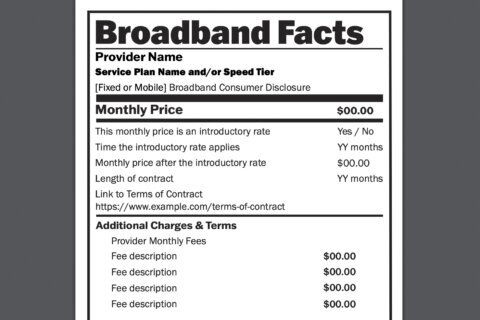It wasn’t long ago when employees had to opt in to their employer’s 401(k) retirement plan. But in recent years, more and more companies have started automatically enrolling employees in their organization’s retirement plan unless they specifically opt out.
While the change has resulted in more workers saving for retirement — that’s a good thing — leaving the contribution amount and investment mix of your retirement savings up to your employer may not be a great idea.
According to the Plan Sponsor Council of America, 45.9 percent of 401(k) plans in the U.S. have an “automatic enrollment” category feature. The council also notes the most common default deferral rate (the amount of money a plan holder steers into his or her 401(k) account) is 3 percent, the amount included in 53.9 percent of plans. Another 55.2 percent of plans with automatic enrollment increase default deferral rates over time, the group reports, and the most popular fund investment option is a target retirement date fund, which is included in 69.7 percent of 401(k) plans.
[Read: Retirement Savings Is a Bigger Crisis Than Health Care.]
Firms that offer automatic enrollment plans seem to approve of them.
“Our firm has an auto-enrollment 401(k) plan at a 2 percent deferral rate, with an auto-increase each year until the contribution rate maxes out at 6 percent,” says Greg Szymanski, director of human resources at Geonerco Management Services in Seattle.
Szymanski says that employee plan participation rates have skyrocketed, rising from 53 percent before the automatic enrollment commenced to 91 percent now. “Communication to each newly eligible participant is clear,” he says. “We say, ‘Here is the plan. if you do nothing, you will be auto-enrolled in a lifecycle fund at 2 percent of gross earnings. If you take no future action, your deferral rate will increase 1 percent each year until it reaches 6 percent. But you can opt out, or change your fund or your deferral rate.”
Virtually all auto-enrollment 401(k) plans work the same, says Justin Goodbread, a certified financial planner with Heritage Investor, in Knoxville, Tennessee. “When the auto-enrollment occurs, the participant is typically placed in a target date fund (although some plans use a balanced fund),” he says. “The target date matches the age of the employee to the corresponding year. The older a participant, the more conservative the investment, for example.”
But Goodbread sees some downside to auto-enrollment plans.
[See: 12 Steps to a Stronger 401(k).]
“The minimum contribution rate is rarely enough for retirement goals,” he says. “I have heard people tell me that 3 percent is more than sufficient for their retirement (and) most advisors recommend saving 10 to 15 percent of annual income for retirement. But after I calculate the future estimated value of their fund for them, the plan participant invariably contributes more toward their retirement.”
High fees can also be an issue if a plan holder isn’t careful.
“In general, the auto-enrollment feature is great because it has helped increase participation in employer-sponsored retirement plans across the country,” says Stephen Rischall, co-founder of 1080 Financial Group, in Sherman Oaks, California. “That said, often times auto-enrolled participants are placed into the plan’s default investment, often times target date funds. But these funds tend to have higher expenses compared to other options, which may be available inside of the plan.”
Rischall advises 401(k) plan participants to take nothing for granted, and to thoroughly check out the plan after being enrolled. “Even if you’ve been automatically enrolled in an employer-sponsored plan it’s important to setup online access to review the plans full lineup of investment options and make investment decisions best suited for your specific situation,” he says.
Another auto-enrollment tip — make sure your contribution rate maxes out at your employer’s matching rate — a figure that’s easy to miss if you’re not paying attention.
“You don’t want to leave free money on the table,” says Evan Mulcher, a partner at FiduciaryVest, an investment advisory firm in Atlanta. “Sometimes companies automatically enroll employees at a low level, say 3 percent. If the company match is 50 percent up to 6 percent, the participant is missing out on free money in the form of the additional company match.”
Employers could also add more value to the auto-enrollment experience by offering employees solid financial advice to accompany their 401(k) plans — but the fact is, most don’t. Data from a recent Natixis Global Asset Management survey shows that only 30 percent of study participants surveyed say they are offered that service by their employer.
This is not to say that auto-enrollment 401(k)s are a bad idea. They are, in theory, a great idea, as the jump in plan participation rates with auto-enrollment attests.
But as the old adage goes, there’s always room for improvement, and employers and employees need to be diligent and work together closely for auto-enrollment plans to have the desired impact on employee retirement savings.
[See: 8 Tips for Investing in Your 30s.]
“If you have been enrolled automatically, your employer has tried to act in your best interests,” says Edward Dressel, president of Trust Builders, a Dallas, Oregon-based developer of retirement planning software. “Behavioral analysis has shown that people have a propensity to do nothing — and in the retirement plan world, this meant many employees failed to opt in and therefore missed out on participating in the retirement plan. In that regard, automatic enrollment is beneficial for most workers.”
More from U.S. News
How to Max Out Your 401(k) in 2017
9 Ways to Avoid 401(k) Fees and Penalties
10 Mistakes You’re Making in Your 401(k)
Maximize Your Auto-Enrollment 401k Plan originally appeared on usnews.com







